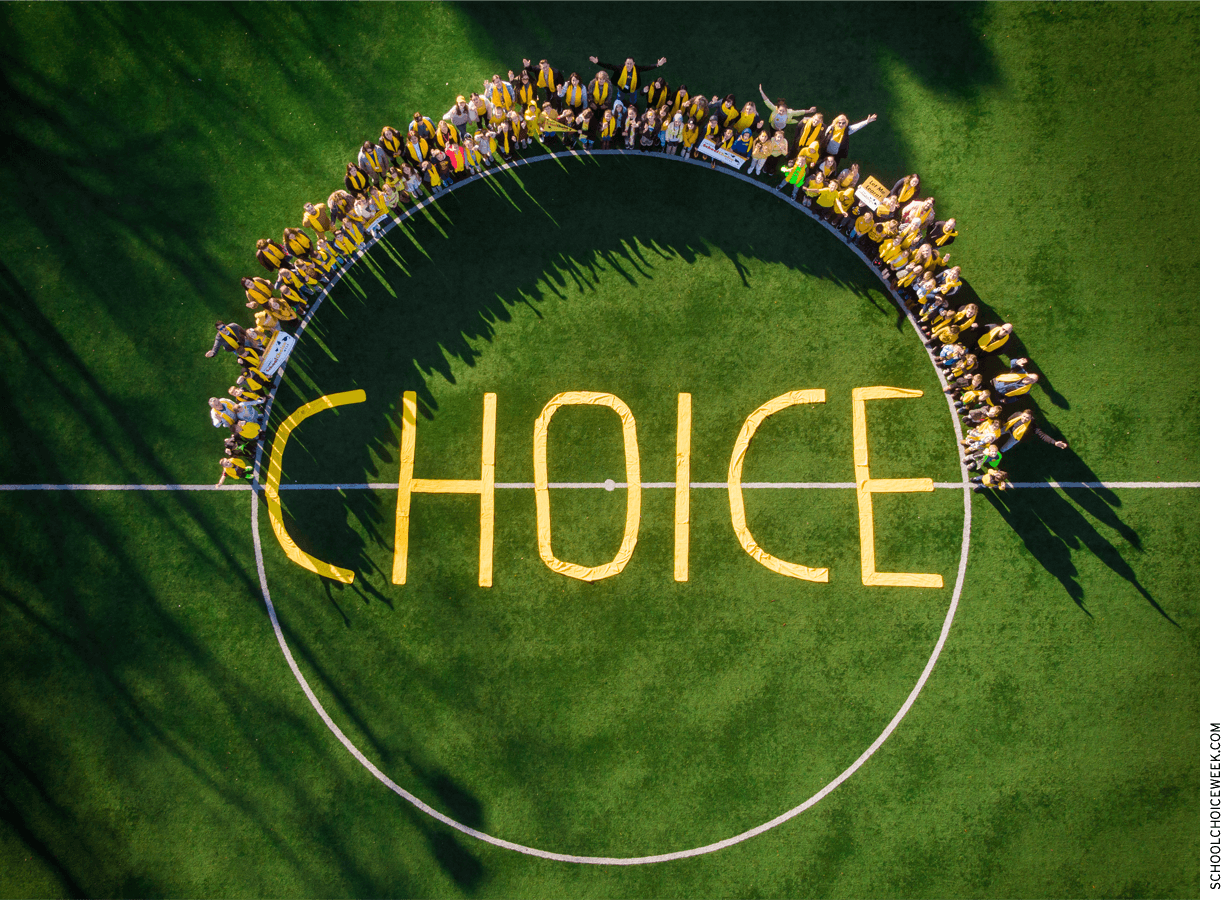
Thousands of communities across the United States will mark this week as National School Choice Week.
“The world’s largest celebration of opportunity in education,” the program, in its ninth year, champions the belief that families should have the freedom to choose the K-12 school or other learning option that best suits their child.
These options include traditional district schools, charter schools, magnet schools, private schools, online schools, micro schools, homeschooling, or innovative combinations of these options.
The best kept secret about school choice today is that it’s no longer the delinquent stepchild of K-12 education. Consider these three facts:
• A majority of Americans support school choice.
• A majority of the nation’s K-12 students attend schools of choice.
• America’s school choosers are satisfied with the choices they’re making.
This means it is now normal for parents to exercise their right to send their child to the school that best meets their needs.
Education Next’s 2019 nationally representative survey of 3,046 adults reveals the nation’s sentiment on vouchers, tax credits, and charter schools—ways families can choose an alternative to having a school district bureaucracy assign their child to a public school. The study oversamples African Americans and Hispanics to examine their specific viewpoints.
Vouchers allow parents to use public dollars to enroll a child in a private school, with dollars going to low income families—targeted vouchers—or all families—universal vouchers. Targeted vouchers are favored by 49% of the public, while 41% oppose them. Since 2016, support increased 12 points and opposition decreased 7 points. The US has 29 targeted voucher programs. While today no universal voucher program exists, 55% favor this approach and 37% oppose it, with support increasing since 2016 by 10 points and opposition decreasing 7 points.
Tax credits allow individual or corporate donors to pay for scholarships for low income families to send a child to a private school. They receive support from 58% of the public while 26% oppose them. Since 2016, support increased by 5 points and opposition decreased 3 points. The US has 23 tax credit programs.
Charter schools allow families to choose a public school operated independently of the traditional school district. Public opinion on charters has been volatile since 2016. Today, public approval is at 48%—about where it was in 2016—while disapproval is at 39%, as high as 2017. The US has 45 charter school laws.
Political affiliation is associated with an individual’s opinions on school choice. Targeted vouchers are supported by 44% of Republicans and 52% of Democrats, while universal vouchers receive 61% and 55% support respectively.
Tax credits are supported by 65% of Republicans and 57% of Democrats, while charters receive backing from 61% of Republicans though are opposed by a 48% plurality of Democrats.
School choice divides the Democratic party along racial and ethnic lines, with African American and Hispanic Democrats supporting choice at much higher levels than non-Hispanic whites.
What percentage of U.S. K-12 students are enrolled in schools of choice?
The National Center for Education Statistics’ most recent information from 2016 shows:
• 19.8% were enrolled in non-charter public schools of choice through magnet schools or non-charter public-school choice programs like open enrollment, allowing families to choose a school other than the assigned district school.
• 9.5% were enrolled in private schools.
• 4.6% of all K-12 students, including private school and homeschool students, were enrolled in charter schools.
• 20% were enrolled in schools due to families exercising “real estate choice”—i.e., they admit buying homes in good school districts to choose a suitable public school for their child.
Total those numbers and confront a little-known fact: a majority of U.S. students—53.9%—exercise school choice, outnumbering those attending assigned public schools.
Are parents satisfied with their choices?
A higher percentage of parents with students in choice schools are “very satisfied” with elements of their child’s education than those in assigned schools. The same is true about parental satisfaction with a school’s academic standards, order and discipline, and staff interaction with parents.
Furthermore, the voluntary exercise of school choice makes the school a vital part of what sociologists call civil society’s mediating institutions, giving families a sense of place and purpose between their private life and the large, bureaucratic institutions of public life.
It likewise nurtures the development of social capital by cultivating relationships and networks that foster community.
School choice is no longer the stepchild of K-12 education. It’s a dominant feature.
And as one author states, “Its growth is the result of people’s deepest urge—to look after their children.”
Yet based on presidential candidate discourse and mainstream media coverage of the topic, one would deduce that school choice is an issue that is still up for debate, so we continue to fight old, tired battles that prevent us from putting the interests of children first.
The hearts, minds, and opinions of U.S. adults endorse school choice. They’re voting with their feet to exercise choice.
That’s worth celebrating this week.
Bruno V. Manno is a senior advisor for the K-12 Program with the Walton Family Foundation.
Correction: Due to an editor’s formatting error, an earlier version of this article included incorrect numbers.


